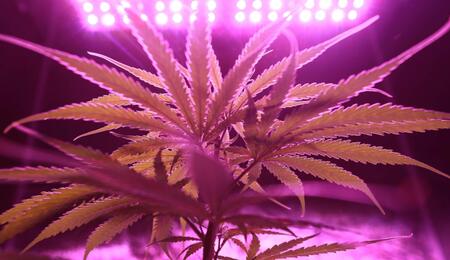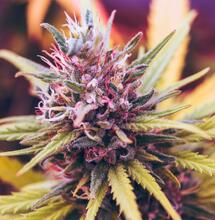How to Clone a Cannabis Plant? It’s Easier Than You Think.

You probably know that there's an option to clone cannabis plants. Or at least you've listened to a friend inquiring all night if what they are smoking is a clone. Cloning cannabis plants is a widespread practice among homegrowers and should you DIY, we are about to give a basic overview of what you are supposed to do.
Just like there is growing cannabis from seed, there's also cloning. Both ways enable us to reproduce weed. Growing weed from seed requires picking seeds or eventually acquiring them through crossing the male and female cannabis plants through pollination to get seeds, germinate the seeds, thus breed a new plant. Cloning is an alternative way to reproduce cannabis plants. When you are cloning a cannabis plant, you are breeding genetically the same crop. It's the ideal method if you want to obtain the replica of a particular crop. So, for instance, if you enjoyed the flavor and the effects of that Girl Scout Cookies or Gorilla Glue you have been growing, you can replicate it with cloning. The process of cloning is simple, time-saving and inexpensive. All you have to do is carefully make cuttings of the plant you wish to replicate, especially if you already grew the perfect plant that you just don't want to let it to waste after harvest.
How to clone a cannabis plant?
Once you know which cannabis plant you want to clone from your garden, you need to set up your cannabis cloning equipment and acquire necessary tools such as scissors, razors, pots and trays. You need to take care of the rooting setup and you also need to have some supplies of rooting hormones to stimulate the cuttings once obtaining them from the "mother" plant. Rooting setup equipment can range from rooting cubes, rockwool cubes or even peat. Rockwool is ideal for moisture retention and sufficient airflow. Grow stores sell rockwool or you can, for instance, pre-soak rockwool cubes yourself. Depending on how much you are willing to spend on your cloning tools and equipment, you can also opt-in for aeroponics, which is more costly but useful for auto-cloning. Aeroponics will automatically nourish any cuttings you place in it and work out pretty well if you want to clone a more substantial number of plants. With rooting cubes, you manually set the tray with water and arrange the cubes with clones in the setting. Usually, a dome is placed over the tray with the clones to retain humidity. So, that's plenty of options for equipment that can help you to clone cannabis plants.
How to proceed with cloning?
You take your perfect "mother" plant and it's time to trim it down. How do you do it? There are some must-do things to help successful cloning. First, your plant needs to look robust and vigorous. Also, ensure that it's not in a flowering stage nor that you've nourished it with fertilizers in the days prior to your cloning efforts. On the plant, you want to make cuttings from branches that look well, are robust, and long enough so that you can reproduce a healthy, well-looking clone. Count that there are two to three nodes on every cutting you take from the "mother" plant. When you scissor the cutting from the mother plant, cut from above the mother plant's node, then, below the bottom node of your fresh cutting, cut gently with a razor, ideally making a 45-degree cut. That should help to optimize the growing process. After you are done with scissoring and razoring, directly put the cuttings into a rooting hormone.
The rooting hormone is essential as it seals the cut plant tissue and influences the formation of roots. There are different plant hormones but for cannabis, take auxins and/or cytokinins. The hormone is the root juice and it's available for purchase in grow stores or online. After applying the liquid, place the cuttings into the root cubes. In case you are using an auto-cloning technique, apply the root hormones in the cloner after arranging all the cuttings. When you are done with this step, you need to tidy up your cuttings a little. Get rid of any leaves found at the bottom of the cuttings and clip off the remainder to promote photosynthesis and nutrient/water uptake. Ensure that you work with clean instruments as you go through all these steps and that your entire work setting is clean. Regardless of which method you've chosen on how to clone your cannabis plant, make sure that the new clones receive sufficient light, ideally up to 18 hours. You can use white LED, CFL or MH for the growing process. Lastly, don't forget that clones require a humid environment.
Monitoring and transplanting
Monitor your cannabis clone babies every day. See if there's sufficient water in the tray or the auto-cloner. If you think that your clones are not humid enough, spray the leaves of the cuttings leaves with a small bottle of water. It may happen that, despite your best efforts, not all your clones are going to make it. It's best to dispose of any unsuccessful cuttings. The clones that survive may be ready to put into soil in about two weeks. A sign that they are ready is if they've grown roots that extend slightly over an inch. When you proceed to transfer the clones into pots filled and prepared with soil, make sure that the soil is watered before that. Wait for the water to soak in the soil and make a small hole to place the cloned roots there. Gently cover the hole with soil afterward. There's no better way for a home grower to retain their favourite plant genetics for an extended time than cloning their cannabis plant. Clones are also a perfect solution if you plan to grow a large number of plants. So don't think twice and get going. That is if you want to grind your favourite nugs all year through and make Oliver, the home grower next door, jealous of your crops.



